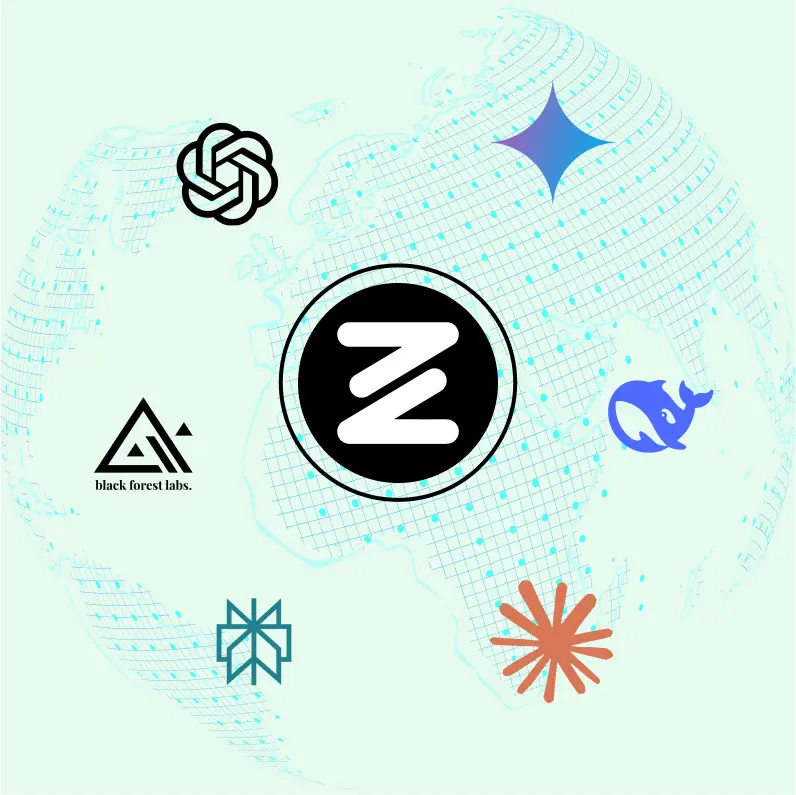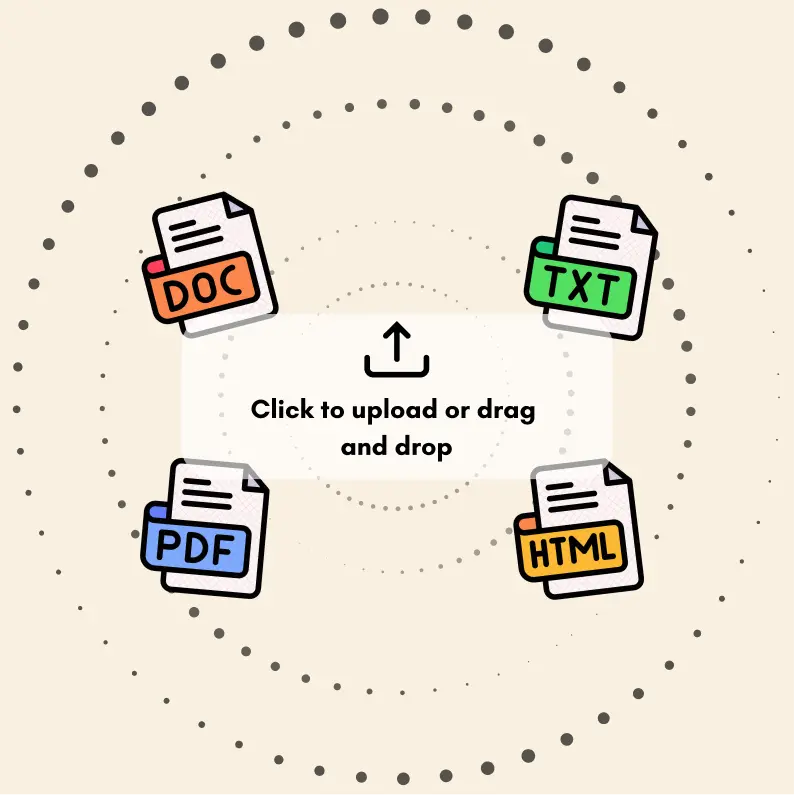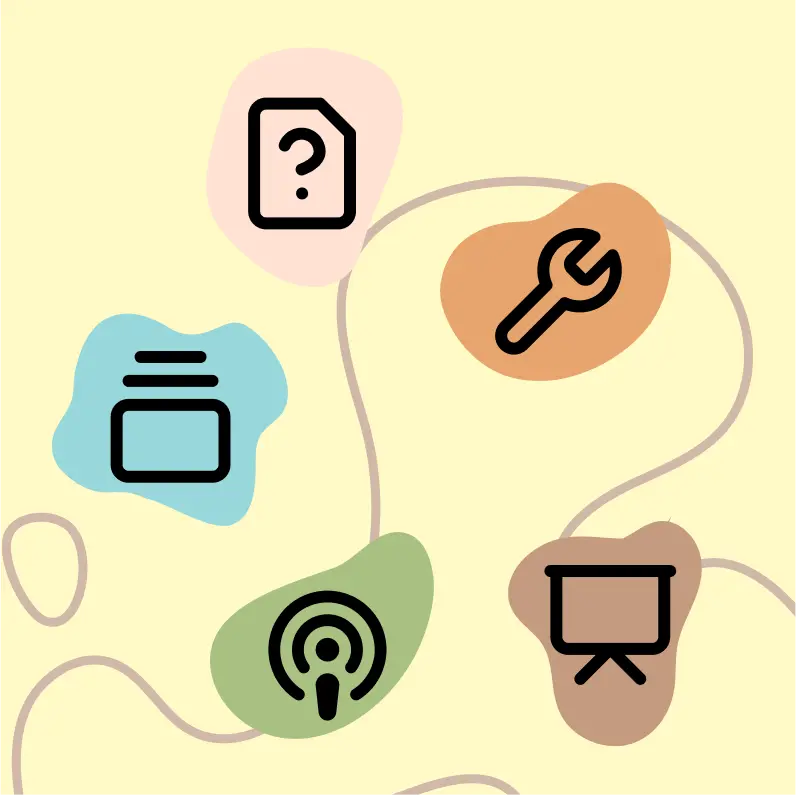Design thinking process steps: A practical guide for real-world results
Discover design thinking process steps and how to apply them from Empathize to Test with practical examples to spark innovation.
The design thinking process is a proven, five-stage framework for tackling challenges creatively: Empathize, Define, Ideate, Prototype, and Test. But don't think of it as a rigid checklist. It's more of a flexible playbook for solving complex problems by always putting human needs at the center of the conversation. And let's be honest, it's way more fun than staring at a spreadsheet.
What Is Design Thinking Really About?
Let’s cut through the jargon. At its heart, design thinking is all about adopting a mindset that prioritizes understanding people before jumping to solutions. It's less of a secret formula for innovation and more of a structured way to stay curious. Instead of leading with a brilliant idea for a product, you start by digging into your user's biggest frustrations.
Think about a product team trying to build a new feature. The old way might be to lock themselves in a boardroom and brainstorm what they think is cool. The design thinking approach flips that entirely. The team would first immerse themselves in their users' world to understand their day-to-day reality. This is the core of the design thinking process: a deep commitment to solving the right problem for the right person.
The Philosophy Behind The Process
The real magic of this framework is that it’s not a one-way street. It’s a loop. You might build a prototype, test it with users, and uncover an insight that sends you all the way back to redefine the problem you thought you were solving. This flexibility is a feature, not a bug—it’s what ensures the final solution is something people actually want and need.
Ultimately, design thinking gives teams a structured yet deeply empathetic creative problem solving process that guides them from ambiguity to clarity.
The visual below maps out the standard five-stage model we'll be exploring.
This flow shows how each stage logically builds on the previous one, from gaining initial user insights to validating a final, tangible solution.
Why It Works For Innovation
The five-step model popularized by Stanford's d.school—Empathy, Definition, Ideation, Prototyping, and Testing—has become the gold standard for a reason. It works. Companies that fully embrace this user-first approach see tangible results, with some studies reporting up to a 50% increase in successful product launches.
This framework provides the structure needed to move from a fuzzy idea to a well-tested solution without getting lost along the way.
To give you a quick overview, here’s a snapshot of what each stage entails.
The Five Stages Of Design Thinking At A Glance
| Stage | Main Goal | Key Activity Example |
|---|---|---|
| Empathize | Understand the user's experiences, motivations, and pain points. | Conducting one-on-one user interviews or ethnographic field studies. |
| Define | Synthesize research to articulate a clear, actionable problem statement. | Creating user personas and "How Might We" statements. |
| Ideate | Generate a wide range of creative ideas to solve the defined problem. | Running brainstorming sessions like "Crazy 8s" or mind mapping. |
| Prototype | Create low-cost, experimental versions of the solution to test. | Building paper prototypes, interactive wireframes, or a physical model. |
| Test | Gather user feedback on the prototypes to refine the solution. | Holding usability testing sessions and observing user interactions. |
This table serves as a handy reference as we dive deeper into each of these five critical stages.
Step 1: Empathize by Understanding Your Users
This is where it all begins. Before you sketch a single wireframe or write a line of code, you have to do one thing: listen. The Empathize phase is about immersing yourself in your users' world to understand their reality, not your assumptions about it. It’s about feeling their frustrations and seeing the problem through their eyes.
Why bother? Because great products aren't built in a vacuum. They come from a deep, genuine understanding of human needs. Skipping this step is like trying to give someone the perfect birthday gift when you don't even know their name. You might get lucky, but you'll probably miss the mark completely.
How to Actually Build Empathy
Building empathy isn't a passive activity. It's a hands-on process of gathering raw, human-centered insights. The goal here is to observe what people do, understand what they need, and uncover what they struggle with—often things they can't even articulate themselves. You have to set aside your own biases and just listen.
"Empathy is crucial to a human-centered design process as it allows design thinkers to set aside their own assumptions about the world and gain real insight into users and their needs."
To get this right, you need to go beyond surface-level surveys and get personal. Your aim is to uncover the "why" behind people's actions, which will inform every decision you make later on.
Here are a few powerful ways to build genuine empathy:
- One-on-One Interviews: Sit down and have a real conversation. Ask open-ended questions like, "Can you walk me through your typical day?" or "Tell me about the last time you felt frustrated trying to accomplish [task]." Let them tell their story.
- Observational Studies: Watch users in their natural habitat. For our team at Zemith, this might mean observing a project manager juggle five different software tools just to get a simple status update. You'll be amazed at the workarounds people invent when a solution isn't working for them.
- Empathy Maps: This is a fantastic collaborative tool. Get your team together and map out what a user says, thinks, does, and feels. It creates a shared understanding of their experience and helps pinpoint their biggest pain points.
The stories and emotions you collect here are gold. Mastering the art of user research is what separates good design from great design. To go deeper, we've put together a complete guide on how to conduct user research that gets to the heart of the matter.
Ultimately, the goal is to shift from sympathy ("I feel for you") to true empathy ("I feel with you"). This creates the solid foundation you need to build a solution that actually makes a difference.
Step 2: Define The Problem You Need To Solve

So, you’ve spent time walking in your user’s shoes. Now it’s time to make sense of everything you’ve learned. The Define stage is where you distill a mountain of observations, interview transcripts, and empathy maps into one clear, powerful problem statement.
Think of it like being a detective. You have all the clues from the Empathize stage—the interviews, the observations, the raw data. Your job now is to connect the dots and figure out what the real problem is. This is where a tool like Zemith can be a lifesaver, helping you organize all that qualitative data and spot patterns you might have missed.
This isn't just about summarizing what people told you. It's about synthesis—finding the patterns, the recurring pain points, and the unspoken needs that bubble up from your research. Nailing this step is absolutely crucial. A well-defined problem statement acts as your North Star, guiding every single decision your team makes moving forward.
Get it wrong, and you could end up building a beautiful, brilliant solution to a problem nobody actually has.
From Empathy to Actionable Insight
The whole point here is to frame the problem from a human perspective. It’s tempting to define it based on business goals, like, "We need to boost user engagement by 15%." But that’s your goal, not your user’s problem.
Instead, you need to stay focused on their world. A great problem statement is inspiring, actionable, and gives your team a clear, shared mission.
For example, after talking with project managers, the Zemith team took all their findings and moved from a vague observation like "Project managers seem stressed" to a much more focused, human-centered problem statement:
Busy project managers need a way to visualize team workload in real-time because they want to prevent burnout and keep projects on track.
Notice how this doesn't jump to a solution ("Let's build a dashboard!"). It simply frames the user, their core need, and the insight behind it. This kind of clarity is the perfect launchpad for the next step in the design thinking process: Ideation.
Crafting Your Point of View
One of the best ways to get to that crystal-clear statement is by using a Point of View (POV) framework. It’s a simple but incredibly effective formula that keeps you focused on what really matters.
It breaks down like this:
- User: Who is the specific person you're trying to help?
- Need: What is their fundamental need? Try to get to the root of the issue.
- Insight: What was the surprising or non-obvious thing you discovered about their situation or worldview?
This structure forces you to connect your research directly to the problem you're aiming to solve. While you’re in this mode of analysis, you might also find it useful to understand your project's wider strategic position. Learning how to conduct a SWOT analysis is another fantastic way to gain that kind of big-picture clarity.
Step 3: Ideate Creative and Bold Solutions
Now that you have a well-defined problem statement to guide you, it's time to switch from analytical thinking to pure, unadulterated creativity. This is the Ideate stage, the part of the design thinking process where your team’s imagination takes center stage.
The mission here is simple: generate a massive number of potential solutions. This is all about going wide and exploring every possibility. Forget about feasibility or finding the "perfect" answer for now. The focus is strictly on quantity over quality.
Seriously, no idea is off-limits. Encourage wild, unconventional, and even seemingly absurd suggestions. You'd be surprised how often a completely impractical idea can trigger a conversation that leads to something truly innovative. This is a judgment-free zone where creativity runs free.
For our Zemith team, this phase might involve using our platform's brainstorming features to capture every idea on how to help project managers visualize their team's workload. Ideas could fly, ranging from a simple, color-coded spreadsheet to a sophisticated, fully gamified dashboard complete with progress bars and team achievements. At this stage, everything gets thrown on the wall.
Unleashing Your Team's Creativity
Getting the creative sparks flying requires more than just a whiteboard and a fresh set of markers. While those are great, structured brainstorming techniques are the real key to unlocking diverse perspectives and ensuring everyone on the team has a voice.
Here are a few proven methods to get your ideation sessions rolling:
- Mind Mapping: This is a classic for a reason. Start with your core problem in the center of the board and branch out with related concepts, themes, and potential solutions. It’s a fantastic visual way to connect the dots between different lines of thought.
- "How Might We" Questions: This technique reframes your problem statement to open up possibilities. Instead of a flat statement like, "We need to visualize workload," you ask, "How might we make workload feel less like a burden?" or "How might we turn capacity planning into a fun, collaborative game?" These questions invite creative answers, not just simple fixes.
- SCAMPER: Think of this as a creative thinking checklist. It’s an acronym for Substitute, Combine, Adapt, Modify, Put to another use, Eliminate, and Reverse. Running your problem through this framework forces you to look at it from completely different angles.
The real magic of ideation isn't just the final list of ideas. It's the shared energy, collaborative spirit, and collective understanding you build as a team. It aligns everyone around the realm of what's possible before you narrow your focus.
A well-facilitated session makes all the difference. Encourage a "Yes, and..." mentality, where team members build on each other's ideas rather than shutting them down. If you want to dig deeper into running effective sessions, take a look at our guide on how to brainstorm ideas.
The Ideate stage wraps up once you have a rich and diverse collection of potential solutions. From here, the next step is to start bringing these abstract concepts to life to figure out which ones have real promise.
Step 4 Prototype Your Best Ideas Quickly

You’ve just come out of a great ideation session, and the room is buzzing with energy. The walls are covered in sticky notes, each one a potential breakthrough. But how do you know which ideas are worth pursuing? This is where you move from thinking to doing.
Welcome to the Prototype phase. It’s all about taking your most promising concepts off the whiteboard and putting them into the real world, even in a small way.
This isn’t the time to build a perfect, pixel-perfect product. Quite the opposite. The goal here is to create simple, low-cost, scaled-down versions of your idea that someone can actually interact with. Think of it like an architect building a small cardboard model before drawing up the final blueprints for a skyscraper. It’s a way to see and feel the idea in three dimensions.
The core principle is to fail fast and learn cheaply. A prototype isn't a statement; it's a question you're asking your users. A quick sketch or a basic clickable model can expose a fatal flaw in your logic in just a few hours—a discovery that could save you weeks, or even months, of wasted engineering effort. It's always better to find out an idea is confusing now, before a single line of code has been written.
Bringing Your Ideas to Life
Prototypes come in all shapes and sizes, from incredibly simple sketches to more interactive models. The trick is to match the fidelity of your prototype to the questions you need answered. Don't spend days building a polished digital mockup if a few drawings on paper can tell you what you need to know.
After their ideation session, our Zemith team zeroed in on the project manager dashboard idea. But instead of immediately assigning it to developers, they used simple design tools to create a clickable prototype. This gave them a realistic-looking, but completely non-functional, version of the dashboard. In an afternoon, they turned an abstract concept into a tangible artifact they could show to real project managers.
A prototype is worth a thousand meetings. It moves the conversation from "What if?" to "What do you think of this?"—and that shift is where real progress happens.
Types of Prototypes to Consider
The kind of prototype you build depends entirely on what you’re trying to learn. Are you testing the overall flow of a new app, or just the physical feel of a new button?
Here are a few common approaches:
- Paper Prototypes: This is prototyping at its fastest and cheapest. You literally sketch screens on paper to test an app's navigation or layout. It’s the perfect way to get immediate feedback on your core concept without any technical work.
- Wireframes: Think of these as digital blueprints. They are simple, black-and-white layouts that focus purely on structure and function, ignoring all visual design elements like colors and fonts. They’re great for mapping out the user’s journey.
- Clickable Mockups: Using platforms like the ones available through Zemith, you can link static design screens together to create a high-fidelity mockup that looks and feels like a finished product. This is your go-to for gathering detailed feedback on usability and the user interface right before development kicks off.
Creating these quick-and-dirty versions allows you to test out which of your solutions actually resonate with users and solve the problems you identified earlier. It’s the essential step that connects your team's imagination to your users' reality.
Step 5: Test Your Solution With Real Users

This is the moment of truth. You’ve listened, defined, brainstormed, and built. Now it’s time for the final and most revealing of the design thinking process steps: the Test phase. This is where your carefully crafted prototype leaves the nest and meets the real world.
The goal here isn't to defend your idea or get a pat on the back. It's the exact opposite. You're actively looking for the flaws, the confusing parts, and any friction points. This raw, unfiltered feedback is gold because it tells you what needs to be fixed, refined, or even rethought entirely.
Our Zemith team is about to do just that. They’ll put their clickable dashboard prototype into the hands of the same project managers they interviewed during the Empathize phase. Then, they’ll watch, listen, and learn as their assumptions are put to the test.
Conducting Effective User Testing
The insights you get from testing are only as good as the test itself. Your job is to create a believable scenario that allows users to interact with the prototype as they normally would. Simply asking, "So, do you like it?" won't cut it.
Instead, give them a task. The Zemith team might say, "Your boss just asked for a workload update for next week. Show me how you'd use this to find out who on your team has capacity." Watching someone try to complete a real-world task reveals so much more than a simple yes-or-no question ever could.
Here are a few tips for running a great testing session:
- Create realistic scenarios: Don't just give a tour of the features. Give users a clear goal to accomplish.
- Ask open-ended questions: Prompts like, "What are you thinking right now?" or "What did you expect to happen there?" encourage them to share their thought process.
- Encourage brutal honesty: Reassure them there are no wrong answers. You want them to find what's broken.
- Observe, don't lead: Fight the urge to jump in and explain how it’s supposed to work. The struggle is where the most valuable insights live.
Turning Feedback Into Action
After a handful of sessions, you’ll start to see patterns emerge. Maybe three out of five users couldn't find the "export" button, or everyone misinterpreted the same icon. This is the moment you translate what you’ve learned into concrete, actionable improvements.
Testing isn't a final exam. It's an open-book quiz where the answers help you build a better product. The insights you gain here often send you back to earlier stages, and that’s a good thing.
The results from your tests fuel the next iteration. For digital products, this might mean refining the user interface or tweaking the workflow. For anyone working on web-based solutions, learning from a practical guide to split testing landing pages can offer powerful ways to compare versions and make decisions backed by real user data.
It's this continuous loop of prototyping and testing that ultimately transforms a good idea into a great one.
Common Questions About Design Thinking
Even with a clear map of the design thinking process steps, a few questions always pop up when it comes to applying it in the real world. Let’s walk through some of the most common ones to clear up any lingering confusion.
Is The Design Thinking Process Always Linear?
Not at all. While we often lay it out as a neat, one-through-five sequence, that’s really just for teaching purposes. In practice, the process is much more of a flexible, looping dance than a straight march forward.
Think of it as a guide, not a rigid rulebook. It's perfectly normal for insights from the Test phase to send you straight back to the Define stage to rethink the entire problem statement. Sometimes, building a prototype uncovers a brilliant new idea, pulling you right back into another Ideate session. This non-linear, iterative flow is actually one of its biggest strengths, allowing you to refine and improve your solution constantly.
Can I Use Design Thinking If I Am Not A Designer?
Yes, and you absolutely should. Design thinking isn't about a job title; it's a way of approaching problems. At its heart, it’s a framework for innovation that puts people first, which is a valuable skill in any field.
- Marketing teams can use it to get inside their customers' heads and create campaigns that truly connect.
- HR departments can apply it to reimagine everything from employee onboarding to performance reviews.
- Product managers can use it to make sure they’re building features people genuinely want and need, not just features for features' sake.
Anyone can learn and apply these steps to tackle complex challenges simply by starting with human needs.
What Is The Most Important Step In The Process?
That’s a tough one—it’s a bit like asking a chef to pick their favorite ingredient. They’re all essential for creating the final result. That said, if you had to pin it down, many practitioners would point to the Empathize phase as the most foundational.
Why? Because everything else is built on it. Without a deep, authentic understanding of the people you're designing for, you're just working off assumptions. A poorly understood problem leads to an elegant solution for a need that doesn't exist. Strong empathy ensures you’re pointed in the right direction from the very beginning, solving the right problem for the right people.
Ready to put these steps into action and streamline your own creative process? The Zemith AI platform integrates powerful tools for research, brainstorming, and content creation into a single, seamless workspace. Stop juggling multiple apps and start building smarter solutions today. Explore what's possible at https://www.zemith.com.
Explore Zemith Features
Introducing Zemith
The best tools in one place, so you can quickly leverage the best tools for your needs.
All in One AI Platform
Go beyond AI Chat, with Search, Notes, Image Generation, and more.
Cost Savings
Access latest AI models and tools at a fraction of the cost.
Get Sh*t Done
Speed up your work with productivity, work and creative assistants.
Constant Updates
Receive constant updates with new features and improvements to enhance your experience.
Features
Selection of Leading AI Models
Access multiple advanced AI models in one place - featuring Gemini-2.5 Pro, Claude 4.5 Sonnet, GPT 5, and more to tackle any tasks

Speed run your documents
Upload documents to your Zemith library and transform them with AI-powered chat, podcast generation, summaries, and more

Transform Your Writing Process
Elevate your notes and documents with AI-powered assistance that helps you write faster, better, and with less effort

Unleash Your Visual Creativity
Transform ideas into stunning visuals with powerful AI image generation and editing tools that bring your creative vision to life

Accelerate Your Development Workflow
Boost productivity with an AI coding companion that helps you write, debug, and optimize code across multiple programming languages

Powerful Tools for Everyday Excellence
Streamline your workflow with our collection of specialized AI tools designed to solve common challenges and boost your productivity

Live Mode for Real Time Conversations
Speak naturally, share your screen and chat in realtime with AI

AI in your pocket
Experience the full power of Zemith AI platform wherever you go. Chat with AI, generate content, and boost your productivity from your mobile device.

Deeply Integrated with Top AI Models
Beyond basic AI chat - deeply integrated tools and productivity-focused OS for maximum efficiency
Straightforward, affordable pricing
Save hours of work and research
Affordable plan for power users
Plus
- 10000 Credits Monthly
- Access to plus features
- Access to Plus Models
- Access to tools such as web search, canvas usage, deep research tool
- Access to Creative Features
- Access to Documents Library Features
- Upload up to 50 sources per library folder
- Access to Custom System Prompt
- Access to FocusOS up to 15 tabs
- Unlimited model usage for Gemini 2.5 Flash Lite
- Set Default Model
- Access to Max Mode
- Access to Document to Podcast
- Access to Document to Quiz Generator
- Access to on demand credits
- Access to latest features
Professional
- Everything in Plus, and:
- 21000 Credits Monthly
- Access to Pro Models
- Access to Pro Features
- Access to Video Generation
- Unlimited model usage for GPT 5 Mini
- Access to code interpreter agent
- Access to auto tools
- 10000 Credits Monthly
- Access to plus features
- Access to Plus Models
- Access to tools such as web search, canvas usage, deep research tool
- Access to Creative Features
- Access to Documents Library Features
- Upload up to 50 sources per library folder
- Access to Custom System Prompt
- Access to FocusOS up to 15 tabs
- Unlimited model usage for Gemini 2.5 Flash Lite
- Set Default Model
- Access to Max Mode
- Access to Document to Podcast
- Access to Document to Quiz Generator
- Access to on demand credits
- Access to latest features
- Everything in Plus, and:
- 21000 Credits Monthly
- Access to Pro Models
- Access to Pro Features
- Access to Video Generation
- Unlimited model usage for GPT 5 Mini
- Access to code interpreter agent
- Access to auto tools
What Our Users Say
Great Tool after 2 months usage
simplyzubair
I love the way multiple tools they integrated in one platform. So far it is going in right dorection adding more tools.
Best in Kind!
barefootmedicine
This is another game-change. have used software that kind of offers similar features, but the quality of the data I'm getting back and the sheer speed of the responses is outstanding. I use this app ...
simply awesome
MarianZ
I just tried it - didnt wanna stay with it, because there is so much like that out there. But it convinced me, because: - the discord-channel is very response and fast - the number of models are quite...
A Surprisingly Comprehensive and Engaging Experience
bruno.battocletti
Zemith is not just another app; it's a surprisingly comprehensive platform that feels like a toolbox filled with unexpected delights. From the moment you launch it, you're greeted with a clean and int...
Great for Document Analysis
yerch82
Just works. Simple to use and great for working with documents and make summaries. Money well spend in my opinion.
Great AI site with lots of features and accessible llm's
sumore
what I find most useful in this site is the organization of the features. it's better that all the other site I have so far and even better than chatgpt themselves.
Excellent Tool
AlphaLeaf
Zemith claims to be an all-in-one platform, and after using it, I can confirm that it lives up to that claim. It not only has all the necessary functions, but the UI is also well-designed and very eas...
A well-rounded platform with solid LLMs, extra functionality
SlothMachine
Hey team Zemith! First off: I don't often write these reviews. I should do better, especially with tools that really put their heart and soul into their platform.
This is the best tool I've ever used. Updates are made almost daily, and the feedback process is very fast.
reu0691
This is the best AI tool I've used so far. Updates are made almost daily, and the feedback process is incredibly fast. Just looking at the changelogs, you can see how consistently the developers have ...
